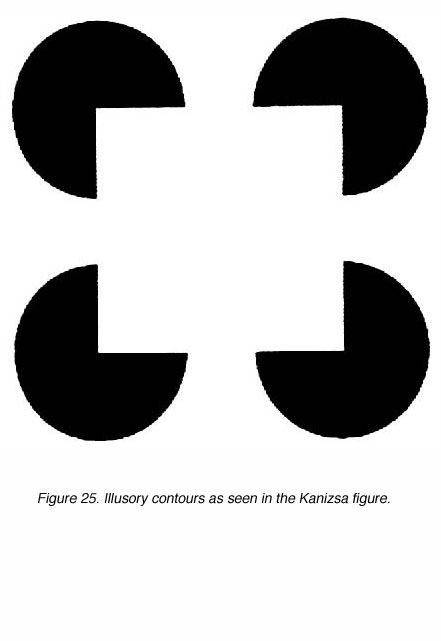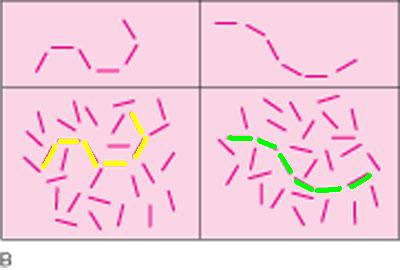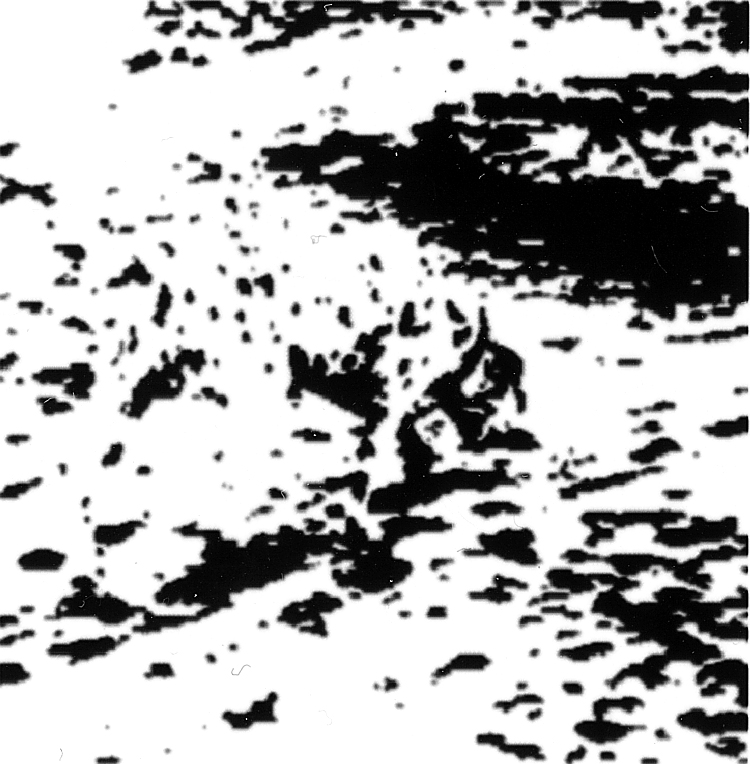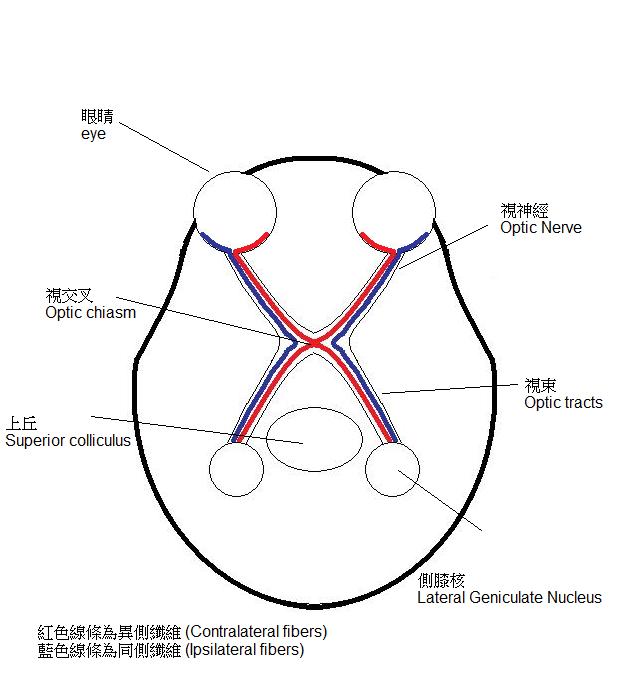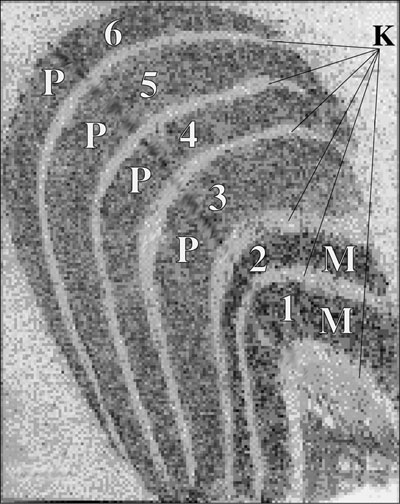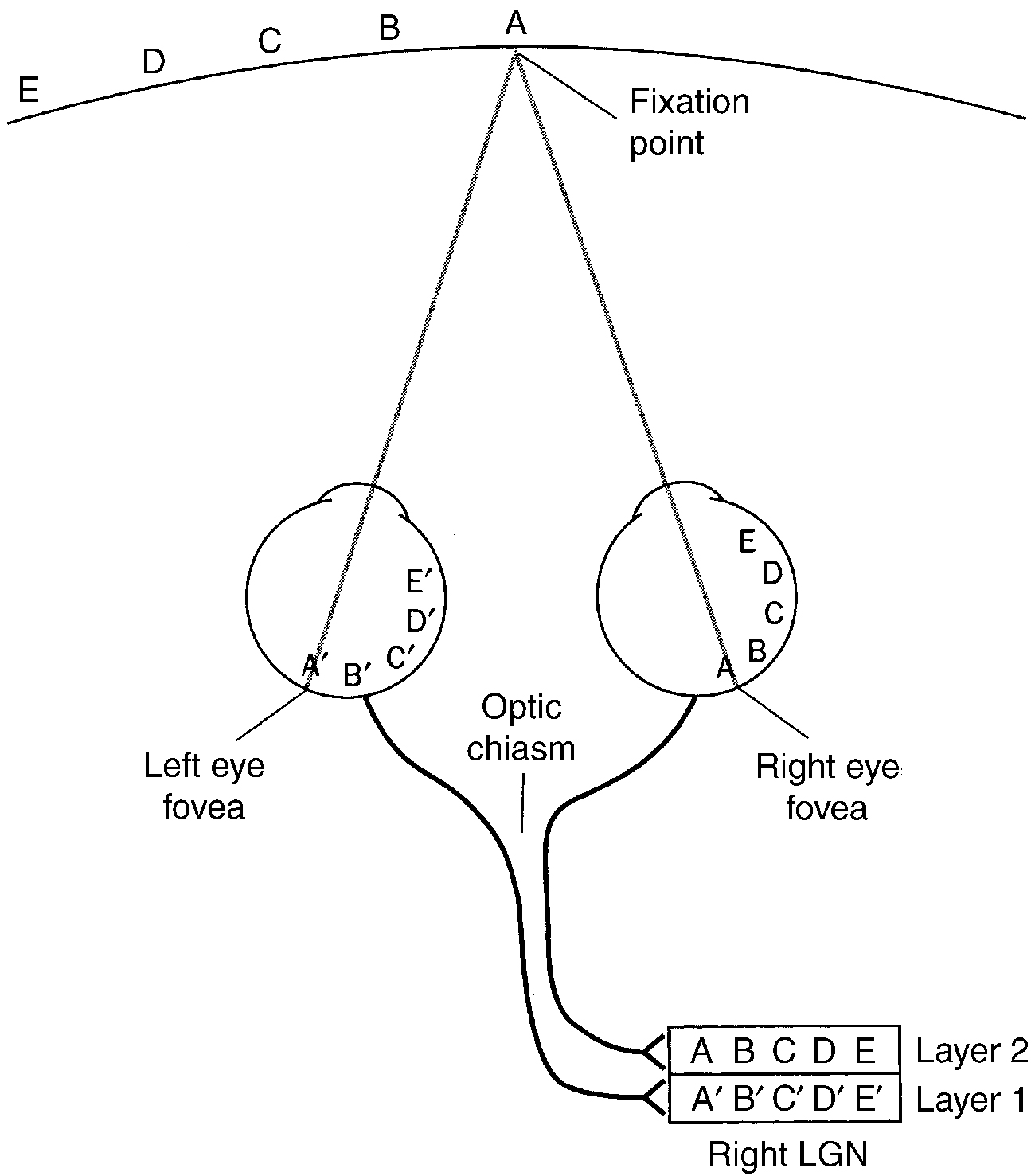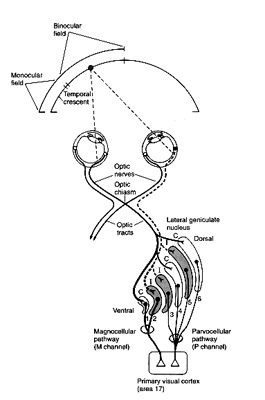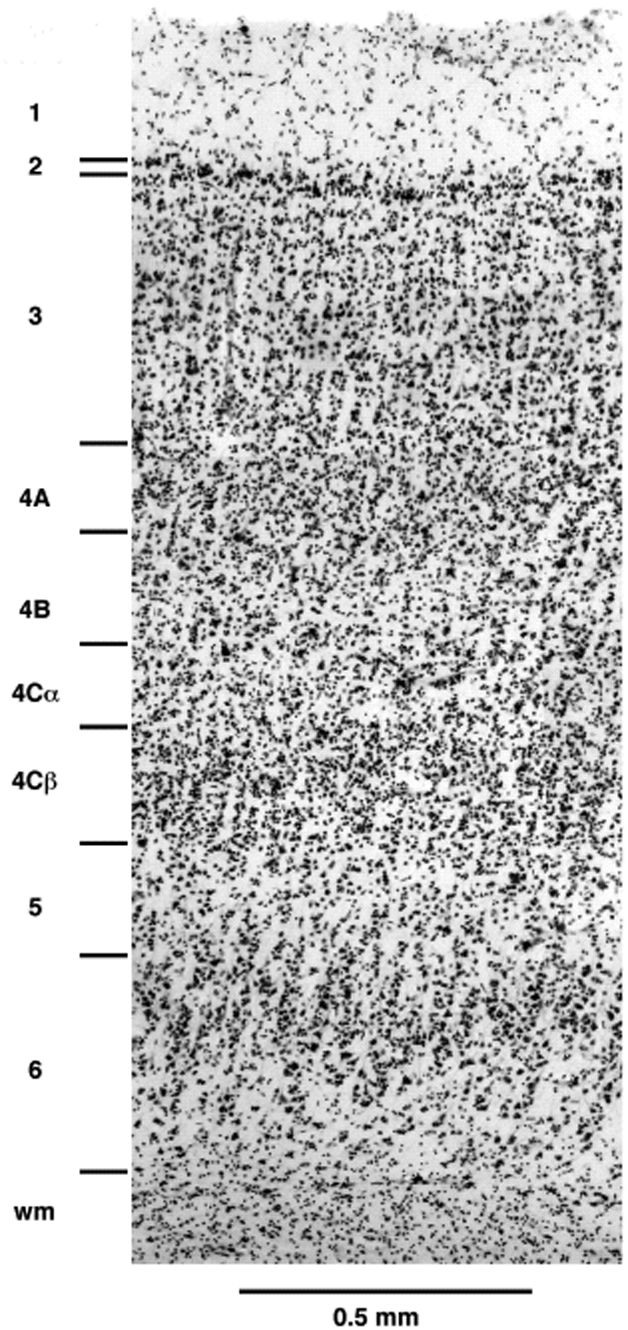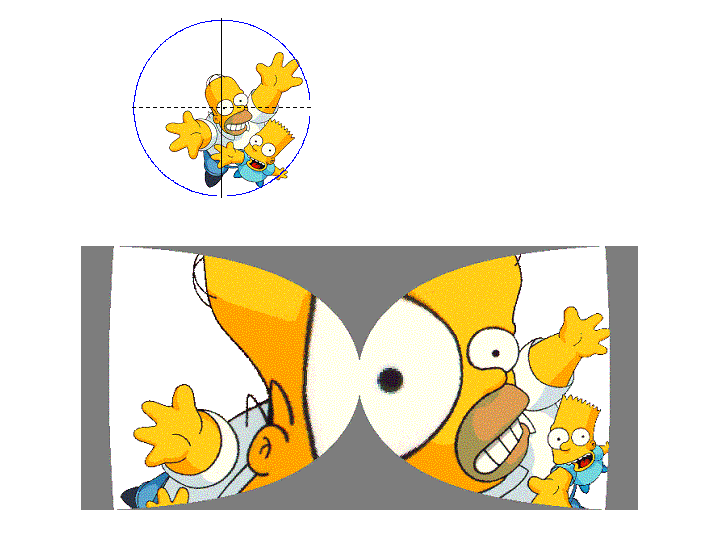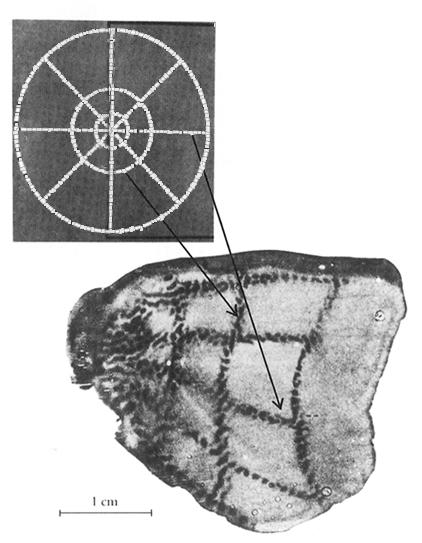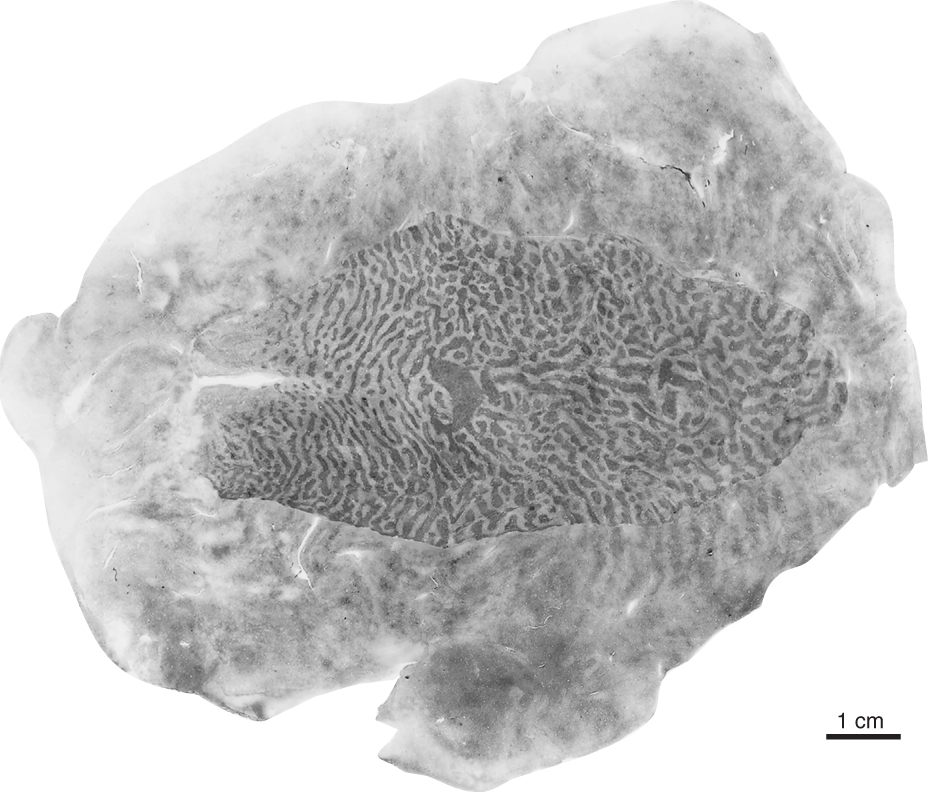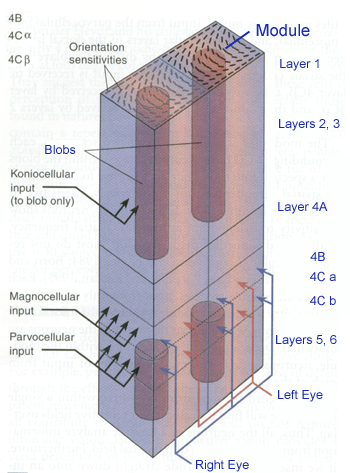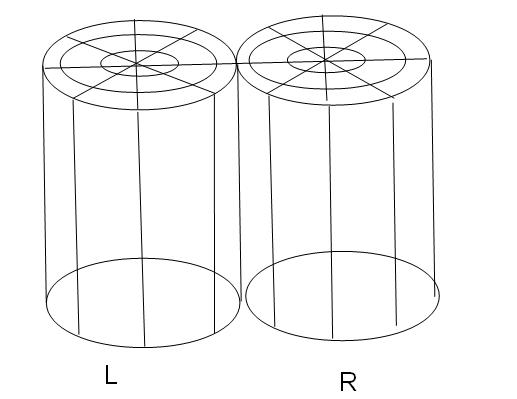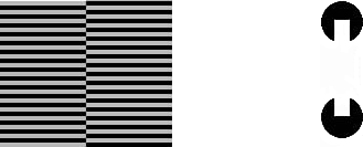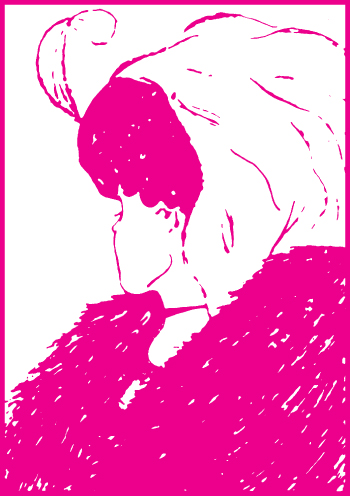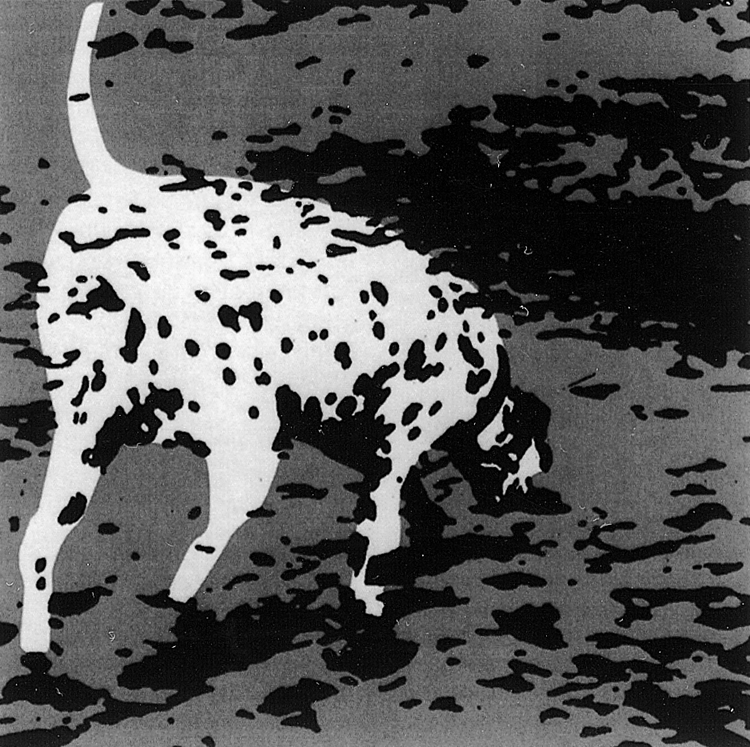第四講:The Visual Cortex and Beyond
出自KMU Wiki
目錄 |
[編輯] The Visual Cortex and Beyond
- Seeing as an active process
- 我們看東西是被動的嗎?
- 錯覺輪廓 illusory contour
- 我們看東西是被動的嗎?
- 差在那裡?
- 邊界傾斜
- 差在那裡?
- 雙可圖形
- Rubin's vase
- 雙可圖形
Rubin's_vase.gif
- 視覺解釋及記憶
- 你看到什麼課本最後也有解釋
- 前面四張圖的結論
- 我們所見不是只有光學影像本身
- 我們用眼睛及再加....來看
- 本章主題就是....
- ....是什麼?
[編輯] 今天講「腦」《P.74 Gigure4.1》
- 訊息自網膜節細胞離開視網膜
- 進入腦
- LGN -> visual cortex
- 視覺經驗
- Optic Nerve 示意圖
- Optic Nerve(視神經)
- Optic chiasm(視交叉)
- Optic tracts(視束)
- Nerve -> chiasm -> tracts
- 其實都是retina ganglion cells的axon
- 解剖上的不同
- lateral projection(側投射)
- 不是左眼到右腦
- ipsilateral fibers(同側纖維)
- contralateral fibers (異側纖維)
- Superior colliculus(上丘)
- location
- top of brain stem(腦幹)
- function
- Multimodal(多感道) input
- control eye movement
- receptive field property(特性)
- lose center surround
- Phylogenetic(系統發生) – old
- Visual center for lower animals
- Frog, fish....
- Visual center for lower animals
- In higher animals
- Superior colliculus的工作被visual cortex所取代
- 仍有的工作:Visual orienting
- 有receptive fields—but ill-defined ON OFF
- 對stimulus之where反應,what較不反應
- 結果—guidance of eye movement
- location
- Multisensory cells(多重感覺細胞)
- 組成上丘的細胞除了接收視覺傳來的刺激外,還會接收聽覺傳來的刺激,因它可以接收不同的刺激,所以命名為多感覺細胞。
- P.75 Figure4.2
- a.LGN接受來自丘腦(thalamus;T)和其他LGN神經元(L)的訊號,興奮性突處說明L,抑制性突處則是T
- b.訊息經由LGN流入或流出,箭頭大小代表訊號大小
- P.76 Figure4.3
- LGN分六層,
紅色層接收來自同側的訊號,藍色層接受來自對側的訊號
- Lateral Geniculate Nucleus(側膝核)
- Geniculate with bent knee
- Magnocellular layers
- Parvocellular layers
- K cells
- P.76 Figure4.4
- 杯上點A.B.C在視網膜形成A.B.C影像,也在側膝核(LGN)活化A.B.C,這個在LGN和視網膜相同的圖象說明LGN有視網膜的圖像
- Maps in LGN
- retinotopic map
- retinotopic maps 中記錄的情況
- Structure of visual cortex
- Primary visual cortex
- V1
- Area 17
- Striate cortex
- 1.5~2.0mm thick
- 100million cells in V1 each hemisphere
- 6 layers
- Layer 4 input from LGN
[編輯] Retinal map
- Topographic
- 80% cells 處理 10%的visual field
- 因此在視野中心的東西在cortical level放大很大
- 週邊視野的東西則變小
- 80% cells 處理 10%的visual field
- Contralateral(對側) visual field
- 以visual field來分lateral projection
- Receptive Fields of the Striate Cortex
- Hubel and Wiesel 的1950年代末到1970中一連串的研究
- Hubel and Wiesel 1981年獲得Nobel prize
- The Nobel Prize in Physiology or Medicine 1981
- Receptive Fields的形式《P.77 Figure4.6
- orientation
- simple cortical cells
- P.78 Figure4.7
- Hubel and Wiesel當初發現的示意圖
- 到此的Receptive Field的特性
- Retina Ganglion cell-> Center-surround LGN -> Center-surround
- Simple cortical -> bar with orientation
- Complex cortical -> direction of movement
- End-stopped cortical -> length of movement bar
- P.80 Figure4.9
- Grating sti./ Contrast threshold
[編輯] Selective adaptation
- 知覺研究者的微小電極
- 原理
- 感覺神經如果有特異性(即針對特定的刺激才反應)
- 則長時間給于該刺激,則這個神經會疲勞(fatigue)
- 感覺神經疲勞,則其敏感度會下降,即絕對閾上升
- 所以如果有刺激可以在長時間曝露下,讓我們對該刺激的絕對閾上升,可以推論我們內在感覺神經系統對該刺激有「特異性」
- 圖4.10 p.80之說明
- a. 先測量不同傾斜Grating偵測之threshold(是明暗對比的絕對閾,在閾限之下看起來是一片灰色)
- b. 曝露於高對比的Grating中(adaptation,適應過程)
- c. 適應之後,再量不同傾斜Grating偵測之threshold
- Selective adaptation之結果《P.81 Figure4.11
[編輯] Selective Rearing
- 選擇性飼養
- 在特定(即只有限定品質)之環境下飼養動物
- 目的在於測試環境對於動物影響
- 初生動物之感覺剥奪是最常用的
- 本例為:Blakemore and Cooper (1970)《P.81 Figure4.12
[編輯] Maps in Striate Cortex
- 大腦皮質部
- Columnar structure
- 功能上(似乎解剖上亦是)在皮質區有一類型的組織稱為柱狀組織(columnar structure)
- 同柱狀中之細胞功能類似
- 不同柱狀間功能有差異
- 研究方法
- single cell recording (早期)
- brain imaging (近期)
- P.82 Figure4.13
- Hubel and Wiesel (1965)實驗結果
- Cortical magnification factor《P.82 Figure 4.14
- Brain Imaging 《P.83 Figure 4.15
- PET ( positron emission ) 正子電腦斷層掃描
- fMRI ( functional magnetic resonance imaging ) 功能性磁振造影
- 方法
- subtraction technique 減法! 《P.84 Figure 4.16
- Retinotopic maps and Cortical magnification factor by brain imaging《P.84 Figure4.17
- Cortical magnification 示意圖《P.84 Figure4.18
- Topographic map in cortex
- cortical magnification 實驗
- Columnar Structure
- Hubel and Wiesel 所整理
- location column《P.84 Figure 4.19
- orientation column《P.85 Figure 4.20 & 4.21
- ocular dominance column(單眼優勢)
- Hubel and Wiesel 所整理
- Hubel and Wiesel之Hypercolumn《P.86 Figure4.22
- color
- blobs cell 泡泡細胞
- Columns and hypercolumns
- Hypercolumn by De Valois and De Valois
[編輯] Representation in V1
- Representation
- 假想在各層次之資訊表達的方式
- 亦可視為「計算過程」
- 希望把資訊由硬體(大腦)獨立出來,即可由不同的硬體(如電腦)表現同質的東西
- 實際表現
- 大腦神經興奮情況
- Representation示意圖《P.87 Figure4.24
- 或許可能的腦內實際 《P.87 Figure4.25
[編輯] Streams
- Neural Pathway
- 大腦中資訊流向
- What, Where and How
- Dorsal pathway
- Where and How
- Ventral pathway
- What
- Brain Ablation《P.88 Figure4.26
- Visual pathway《P.88 Figure4.27
- Dorsal 與Ventral怎麼分?《P.89 Figure4.28
[編輯] Neuropsychology
- 神經心理學
- 不是生理心理學
- Dissociation
- p. 90 table 4.2
- single / double dissociation
- 單一人/多個人
- D.F.的例子《P.90 Figure4.29
- rod and frame illusion 可以應用在正常人上的多種管道現象《P.91 Figure4.30
[編輯] Modularity
- 在striate cortex之後
- 尤其在IT (inferotemporal cortex)
- 有針對複雜刺激反應的區域
- 如
- FFA (fusiform face area)臉
- PPA (parahippocampal place area)空間配置
- EBA (extrastriate body area)去除臉的身體
- 且這些地方異常會出問題
- prosopagnosia 面孔失認
- Tanaka (1991)的研究《P.92 Figure4.31
- IT與FFA的位置《P.92 Figure4.32
- FFA 在fMRI 的表現《P.92 Figure4.33
[編輯] 神經如何特化
- Neural Specialization
- neural selectivity by Evolution
- theory of natural selection
- neural shaped by Experience
- Gauthier et. al. (1999)
- Greeble
- neural selectivity by Evolution
- Greebles 的辨識之腦中表現在訓練前後《P.95 Figure4.36
- high order vision
- vision is constructive(視覺是建構的)
- context dependent
- 情境相依
- integration of local features(整合局部特徵)
